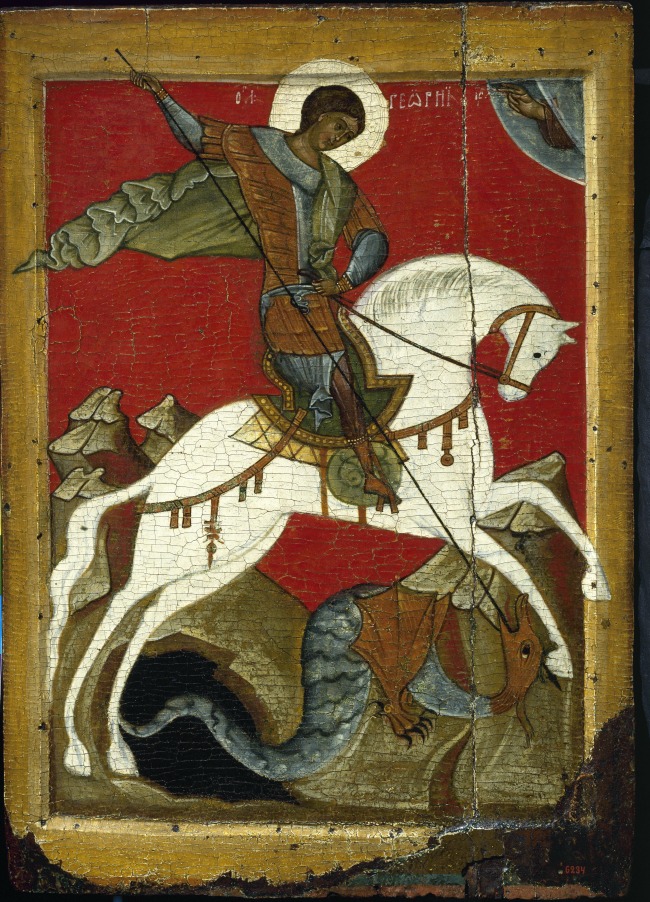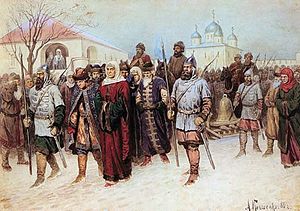My latest book, Red Corner, An Alternate History of Rus, A Novel, gets its name from the Russian practice of having religious icons and/or crosses in one corner or area of a room. The Russian word for it: Кра́сный у́гол – Krasnyj úgol can be translated in a number of ways in English: ‘Beautiful corner’, ‘red corner’ or ‘icon corner’. I chose Red Corner for the title of my novel as it sounds a more poetic than the more prosaic icon corner; beautiful corner, however, went too much the other way, reminding me of something out of a women’s fashion magazine. The red corner in the novel plays a significant part for many of the characters, particularly Grand Duke Ivan III Vasilyevich and Archibishop Filofei. In one scene, Vasily Guba along with a few conspirators planning the assassination of Muscovite turncoat Tovarkov, turn to the Red Corner in the room:
…They drew up the plan quickly: who was to be where and to do what. When they had finished, Guba told everyone to turn to the Red Corner.
Be it in the Kremlin itself or a common peasant’s izba, the Red Corner was the spiritual centre of any family home, and it was no different in Guba’s, where an icon of the Blessed Virgin with baby Jesus hung illuminated by candles. The men, after making the Sign of the Cross, bowed their heads in reverence, focusing their thoughts to the image and prayer. To their Lord, this would be enough for salvation and Divine acceptance for what they were going to do. They could all feel the presence of Mother and Child, and through them they gained inspiration, drifting deeper into the world of holy insight and spiritual bliss. Finally, the image began to talk to them as individuals, and gave them enough of God to complete the task.
They knew the mission they had chosen for themselves as being for the Good – not only for Novgorod’s, but for themselves as men of God, too.
A photo taken in the early 20th century of Russian peasants in their ‘izba’ eating below the ‘Krasnyj Ugol’ (red corner)
This shows how important the red corner was for Russians in the past. In my book it takes on the life of another character, used as a point of reference on more than one occasion.
The red corner was – and still is in some homes – an important tradition in many Orthodox countries like Russia, Ukraine, Bulgaria, Romania and Serbia, and I’m sure in other variations of Christianity around the world, too. Catholicism, it seems, doesn’t have that much of a tradition of red corners or the like, though a crucifix hanging on the living room wall or bedroom is standard in many Roman Catholic countries. One exception to the beautiful corner in a Roman Catholic’s home is my grandfather’s bedroom. Next to his bed, very O.T.T in my opinion, is a red corner ‘a la Irish style’. His collection of crucifixes and crosses made from palms and pictures of John Paul II and Padre Pio is an impressive collection, enough to make the most dedicated Catholic seem almost an unbeliever. In his late eighties now, my grandfather thinks this show of morality will get him into Heaven more quickly than anybody else. The icon corner has, in fact, grown in size since the death of my grandmother in 2007. I asked him recently was his icon corner’s exponential growth connected to his wife of 56 years departing from this world some seven years ago, at which point he answered me ‘no’. He was silent then. Whatever the reason, I suppose it gives him comfort like it does for many of the characters in my novel and for countless people around the Christian world.
Below is a photo of part of the icon corner in my grandfather’s bedroom – if you want to go to Heaven, just make yourself one of these. One-hundred percent guarantee it’ll work or your money back!




